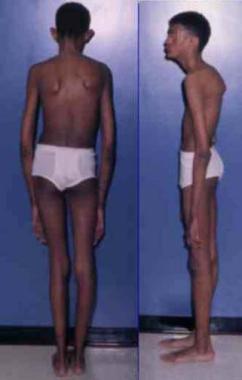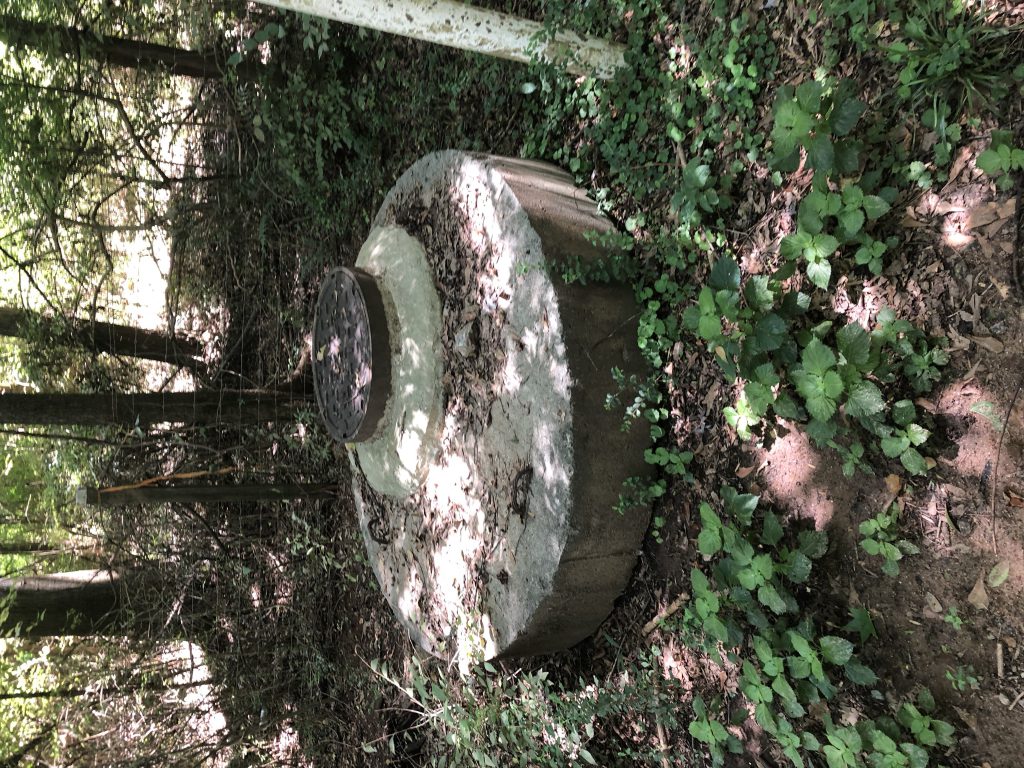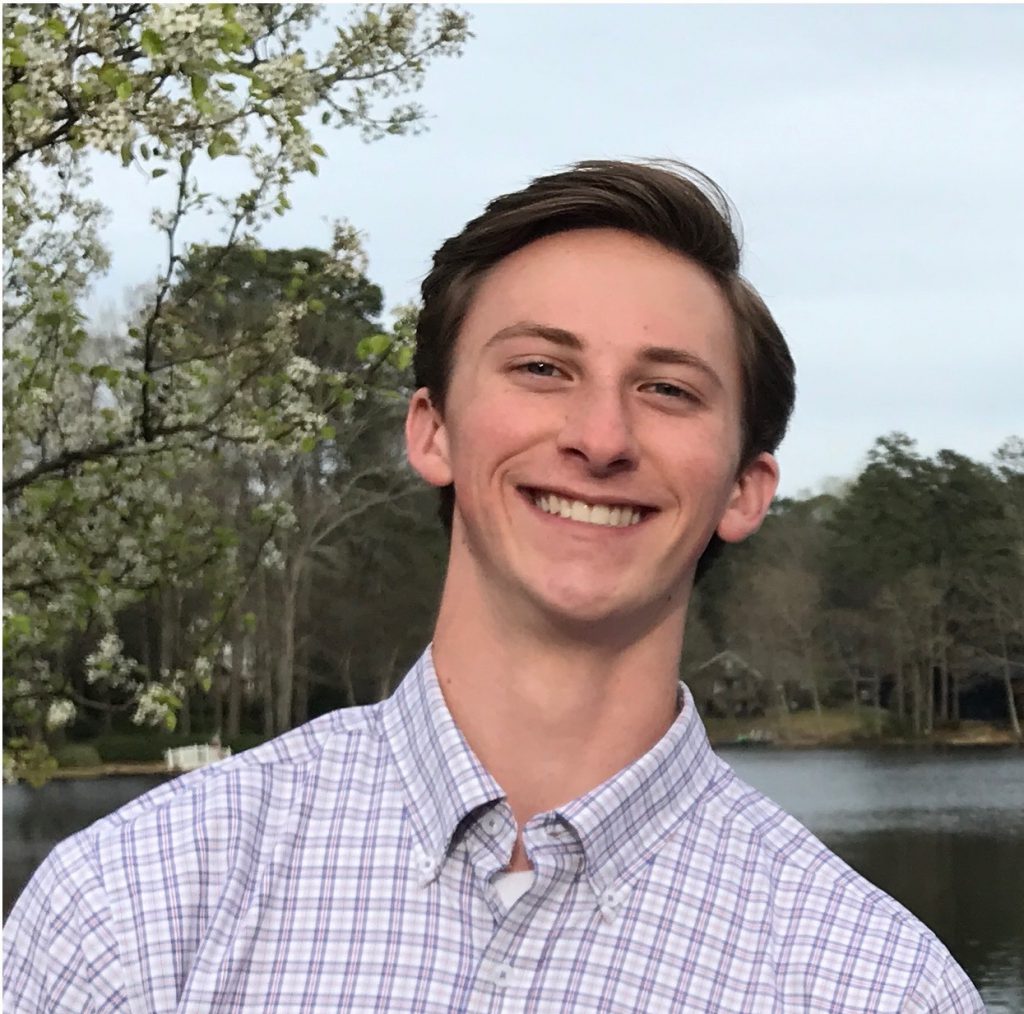By: Chad Hudak
Marfan syndrome is a disease that usually causes vision problems and defects in large blood vessels from the heart. This happens because Marfan syndrome is a disease that affects connective tissues in the body. Marfan syndrome can appear at any point in an individual’s life and can be fatal if it is not treated. This disease affects roughly 1 in 5,000 people around the world and is caused by a mutation in the FBN1 gene. The gene FBN1 creates the protein fibrillin-1 which helps to form connective tissue. Fibrillin-1 creates structures called microfibrils that help connective tissue function properly. Without these microfibrils, the body will overgrow, and tissues will become unstable (5). A common symptom of Marfan syndrome is elongated limbs such as in this image:

Some signs of Marfan syndrome are elongated limbs and loose joints as well as an irregular heartbeat, shortness of breath, and general fatigue. It would be smart to get a genetic test done if you showed any of these symptoms and believed that you may have Marfan syndrome. That is because early treatment is crucial to living out a normal life with this disease. Because there is only one gene associated with the development of Marfan syndrome, I would recommend getting a single-gene sequencing done. I recommend this because there are over 1,300 mutations that could cause Marfan syndrome (2). This test will cost roughly $1,400 to $2,000 (4). The evidence between the variations found in this test and the trait are very solid. Individuals who have one of the variations in their FBN1 gene will have Marfan syndrome, although there are people who show some symptoms of Marfan syndrome but do not actually have the disease.
An issue that an individual might have if they get the test done is that their entire life could change if they find out they have the disease. If a person found out that they had the disease, they would then have to go through regular treatments and alter their lifestyle because of this disease. If a person had Marfan syndrome, it would be ideal to limit exercise and avoid any hard contact or overly strenuous activities (4). Along with lifestyle changes, the test and treatments are expensive. While these may cause someone to not get tested, this trait is inherited in an autosomal dominant manner, meaning that if either of the two alleles is mutated, the individual will have the disease (5). However, if your family has no history of the disease, then the test is not necessary unless symptoms occur.
Testing positive for Marfan syndrome would weigh heavily on a person’s conscious. As a consumer, you would want to assure that the results of the test were either sealed or anonymous to the public. Some downsides of taking the test are the cost and the emotional baggage that may come with the results. I couldn’t find a study on how people reacted to the results of their genetic testing, but individuals with Marfan syndrome came out in an article done by The Mightyand stated some things that they wish others knew about those who have the disease. One person stated that they live in “constant pain” and others motioned that the disease is not the same in every person and that there isn’t just one specific way that a person with the disease might look (1).
To make sure that testing is necessary, there are a few things that a person can check for on their own before making a decision. If one of your parents has the disease, or you begin to show symptoms, it is a very good idea to get tested. Before being tested, you should make a plan on what you will do following the results of the test. It is smart to do this beforehand because there may be disappointing results. If you test positive, you should begin treatment as soon as possible and talk to your doctor about lifestyle changes that may need to be made. In the event that you test negative, nothing needs to change.
If I tested positive, I would make sure to tell my doctor so that I would be getting the correct treatment for the disease. I would tell my doctor something along the lines of this: “Hello Dr.______, As you know, members of my family have had Marfan syndrome and encouraged me to get tested. I had a genetic test done and I tested positive for Marfan syndrome. I will begin treatments as soon as possible and I just wanted to let you know in case there are other medical issues that may arise from this. Thank You, Chad Hudak”.
The disease known as Marfan syndrome is very rare and affects very few people around the world. Because of this, it is not necessary to be worried about the disease unless you have a family history or symptoms occur. Marfan syndrome is not a life-threatening disease as long as precautions are taken to ensure good health.
Works Cited
- Brentano, Elisabeth. “17 Things People With Marfan Syndrome Wish Others Understood.” The Mighty, 14 Nov. 2019, themighty.com/2015/11/living-with-marfan-syndrome-what-to-know/.
- “FBN1 Gene – Genetics Home Reference – NIH.” U.S. National Library of Medicine, National Institutes of Health, 12 Nov. 2019, ghr.nlm.nih.gov/gene/FBN1.
- Inna, Prashanth. “Marfan Syndrome (MFS) Clinical Presentation: Physical Examination, Clinical Diagnostic Criteria for Marfan Syndrome.” Marfan Syndrome (MFS) Clinical Presentation: Physical Examination, Clinical Diagnostic Criteria for Marfan Syndrome, Medscape, 10 Nov. 2019, emedicine.medscape.com/article/1258926-clinical.
- “The Marfan Foundation.” The Marfan Foundation, www.marfan.org/.
- “Marfan Syndrome – Genetics Home Reference – NIH.” U.S. National Library of Medicine, National Institutes of Health, 12 Nov. 2019, ghr.nlm.nih.gov/condition/marfan-syndrome#.






